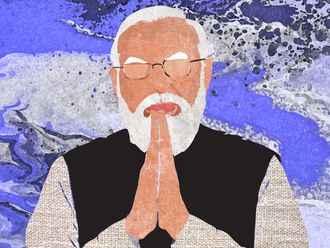You have probably experienced this at some time or another: The day after you discard something, you suddenly find that you need it desperately. It could be a tin cutter, a recipe book, a pair of socks you thought matched nothing. Whatever it is, you will find an urgent requirement for it once it has gone out of your door ...
That happens all the time in our household and that is why we hesitate to dispose of dishes, books or implements. With our luck, we are likely to discover that they — and only they — can serve our specific purpose immediately after they have been tossed out!
Thus for decades we stored things that were classified: ‘You never know when you need them.’ They stayed comfortably in their corners, not grumbling or drawing our attention to them, until one day we decided to clear up, clear out and reduce the clutter — and we could not let them alone.
Our eyes fell first on our books since they were everywhere: On shelves and cupboards and desks and side-tables. It seemed logical to jettison those we had read decades ago and were unlikely to read again — more because of their small print and their now yellowed pages than the subjects — and so we took out the oldest: The travel books I had appropriated from my parents.
Obviously, my parents had harboured a secret yen for travel to corners of the globe that even now are difficult to get to because we had books on the Silk Route, Arctic and Antarctic voyages, travelling in the Andes, living among jungle Indians of South America and many more. We had lapped these up as youngsters, imagining ourselves as explorers and voyagers and dreaming of going in the footsteps of those authors and living their adventures.
Of course, it didn’t happen. We count ourselves lucky to have been on more conventional trips to other countries and other continents but now age, inhibitions and economics tell us that we can indulge our wanderlust only to a certain extent. We wisely acknowledged that there were some places that were just too far and too difficult to reach and we needed to re-think our bucket list.
So, those travel books were pulled out and flipped through quickly, one last time. “I’ll never sail the seven seas. In fact, I don’t want to sail on any seas,” I declared; and all the books on Polynesia, Micronesia, other island nations and all those voyages of discovery were dumped into cartons for disposal.
“There’s really no way I could ever follow in the footsteps of Thor Heyerdahl,” I mused, taking one last fond look at the well-thumbed editions of Kon-Tiki: Across the Pacific in a Raft, Fatu-Hiva: Back to Nature and Aku-Aku that I had loved reading at a time when all I knew of any of the Pacific islands came from these books. “Let someone else enjoy them and dream — and possibly realise their dreams.”
And off they went, donated to anonymous new owners, never again to invite me or challenge me to open them.
And then suddenly, a couple of weeks later, the opportunity to visit Thor Heyerdahl’s home country presented itself — along with the chance to see the original Kon-Tiki raft itself, safely displayed in an Oslo museum. Imagine walking around it, marvelling at the balsa logs it was built of and seeing its actual size! If only — if only — I could re-read the book one more time to bring the adventure of the 101-day voyage alive and let a refreshed memory heighten the excitement of my moments in that museum ...
But those books are gone — and you can bet that nothing else is going to be cleared from my shelves in a hurry — least of all my books!
Cheryl Rao is a journalist based in India.











